Peacocks are beautiful birds that you can keep to beautify your homestead. To maintain the beauty of your peacocks, you need to feed them with quality meals and make sure that they are free from parasites.
What common parasites can infect your peacocks? Can peacocks get parasites such as fleas?
Fleas usually do not attack peacocks but can accidentally do so, especially when you raise them with other pets or farm animals. You need to protect your peacocks from fleas if peacocks are not the only birds that you are raising.
How can you protect your peacocks from fleas? How can you treat a flea-infected peacock? Continue reading.
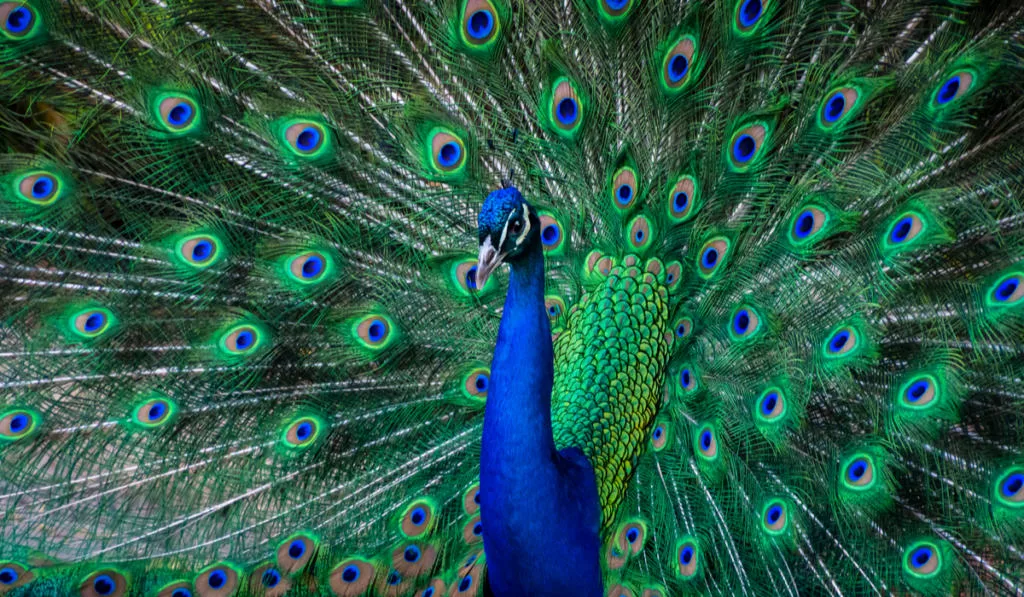
Table of Contents
Can Peacocks Get Fleas?
Peacocks usually do not get fleas but can get them incidentally from other farm animals.
Fleas are insects that search for and attack any preferred animal of their choice. There are many types of fleas, and fleas are known to exhibit high species specificity, which means that each type of flea will have a specific host species that it prefers.
Most types of fleas do not intentionally attack peacocks, but they love farm animals such as goats, cows, and horses. If you happen to raise peacocks with other animals, your peacocks may be at risk of an incidental flea attack. Not to worry, you can prevent fleas from reaching your peacocks.
Before you learn how to treat your peacocks for fleas or prevent fleas from reaching your peacocks, you need to know if there are fleas in your yard or farm in the first place.
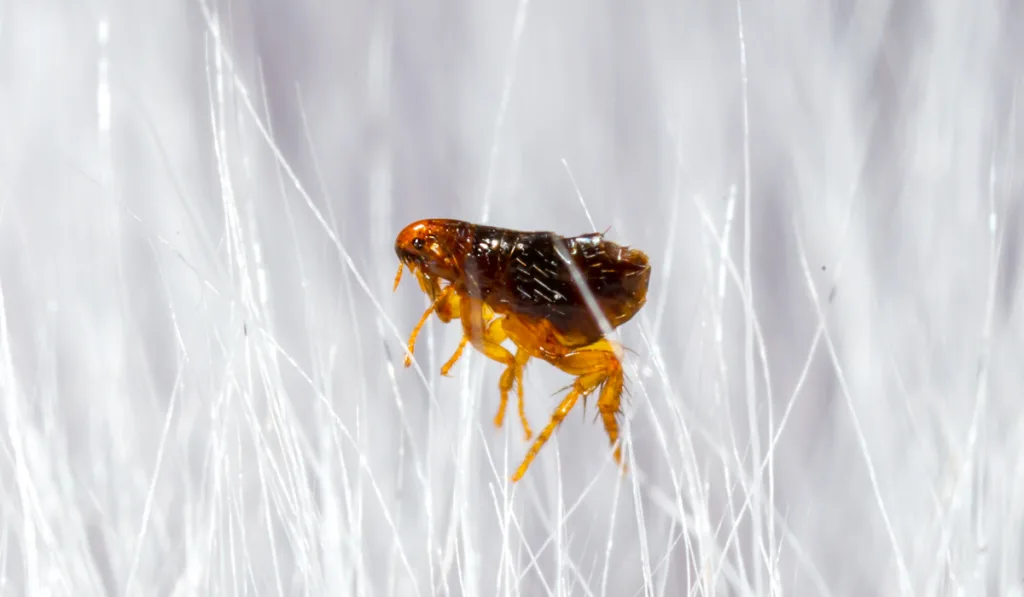
How to Identify Fleas
The best way to know if there are fleas in your farm or yard is to spot them yourself. Here are some ways to identify fleas:
- By their color: Fleas look like small darkish specks that you can see on the body of your pets or farm animals. The flea specks can be brown, black, or reddish, and you will notice that the color of the speck contrasts with that of your pet.
- By their body: Fleas are very small, typically 1-3 mm in length (around the thickness of a quarter). As insects, fleas have six long legs, and their hind legs are well-adapted to hopping (their hind legs are larger than the forelegs).
- By their behavior: If there are a lot of fleas in your garden or yard, you should see these specks hopping around the legs of your pets and farm animals.
Do you think that there are fleas in your yard and that your peacocks may have gotten some fleas? You should treat the peacocks.
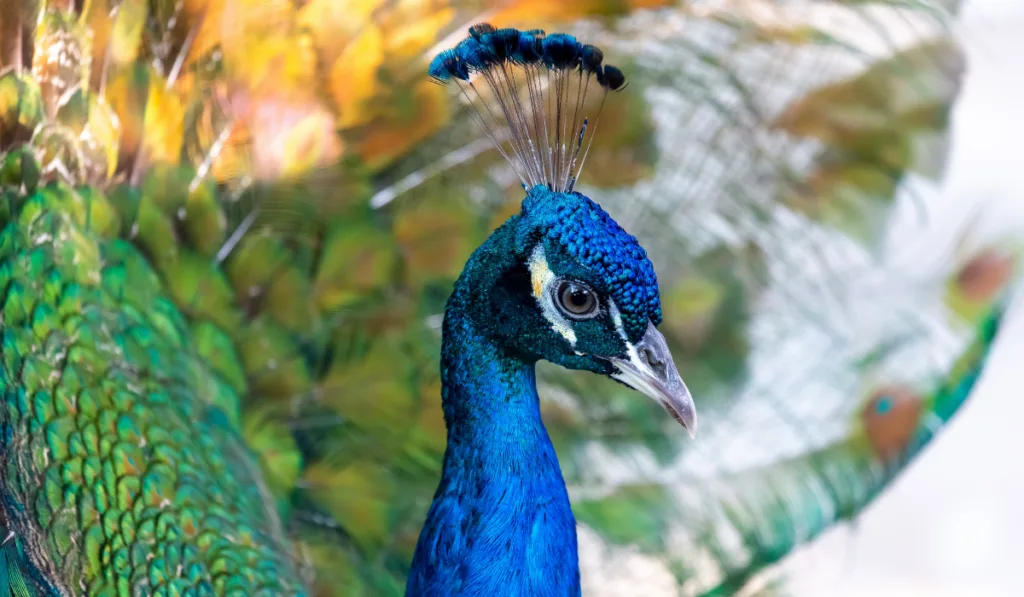
How to Treat Peacocks with Fleas
Even though peacocks are not the major targets of fleas, they can endure damage from fleas like other animals.
Fleas feed on the blood of your peacocks and can cause anemia, a deficiency of nutrients, and even death in your birds. If you notice that your peacocks are eating healthy food but do not look healthy, they may be infected with parasites (not necessarily fleas).
It would be best if you treated your flea-infested peacocks with an approved poultry pesticide.
A common pesticide to treat external parasites in birds such as peacocks is broad-spectrum permethrin. Use the low strength version of this powder under your peacock’s feathers. You can also use food-grade diatomaceous earth as it is a common pest repellent.
Whichever remedy you choose, make sure that you contact the vet so that you can be sure of what you are doing.
Well, prevention is always better than cure. Continue reading to learn how to prevent fleas from infecting your peacocks in the first place.
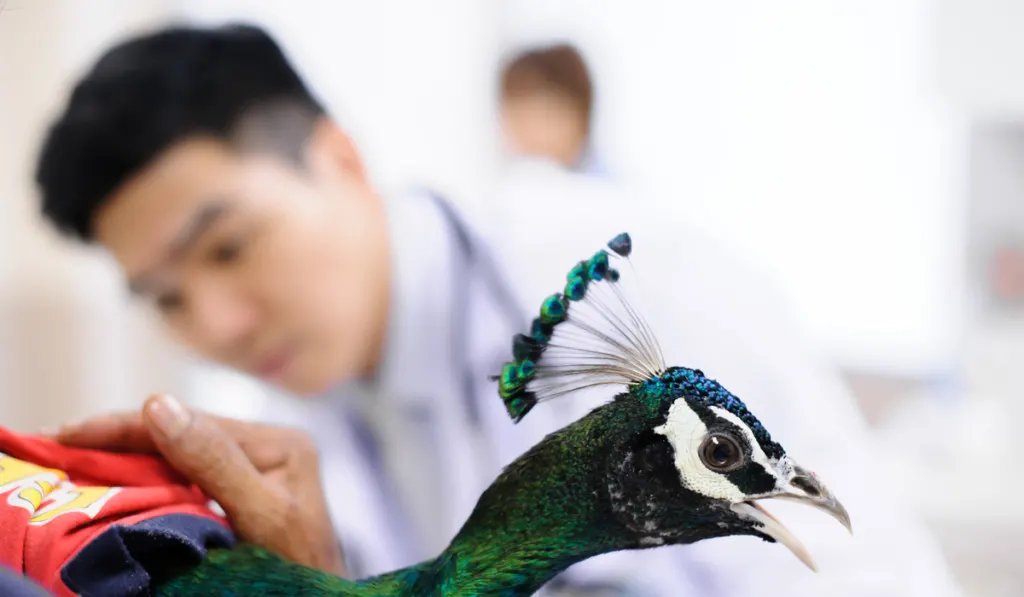
How to Prevent Peacocks from Carrying Fleas
Here are some easy ways to prevent fleas from reaching your peacocks:
- Sprinkle diatomaceous earth on the floor: This powder is very effective in repelling fleas and other little parasites, so sprinkle it on the ground 2-3 times weekly. Apply to places that your peacocks love to lie on.
- Vinegar: If other animals near the peacocks have fleas, spray vinegar on the legs of your peacocks regularly to prevent fleas from attacking them.
- Isolate: You should isolate every animal infected with fleas. Do not allow such animals to go close to others, especially your peacocks.
- Regular checkup: Ensure that you contact the vet regularly so that a flea infestation can be detected and prevented quickly.
- Permethrin: While you can use the low strength of this powder directly on your birds, you can spray the higher strength on your yard. Concentrate on places where your peacocks visit frequently.
- Disinfect their pen often: A good time to disinfect the pen is before the next growing season.
- Treat other farm animals with fleas: Before you raise your peacocks with other farm animals, make sure that they are free from fleas.
- Raise free-range chickens: Free-range chickens can easily spot and eat fleas. Also, they are hardy, and fleas do not easily attack them. Use free-range chickens to control the flea population in your yard. Please do not use chickens that are not used to searching for food by themselves.
As you can see, there are many ways to prevent fleas from reaching your peacocks. Do not allow fleas to go close to your beautiful birds.
Other Peacock Parasites and Pests You Should Watch Out For
Fleas usually do not attack peacocks. But there are some external as well as internal parasites that attack peacocks. Here are some examples and great ways to prevent them from reaching your peacocks:
1. Lice
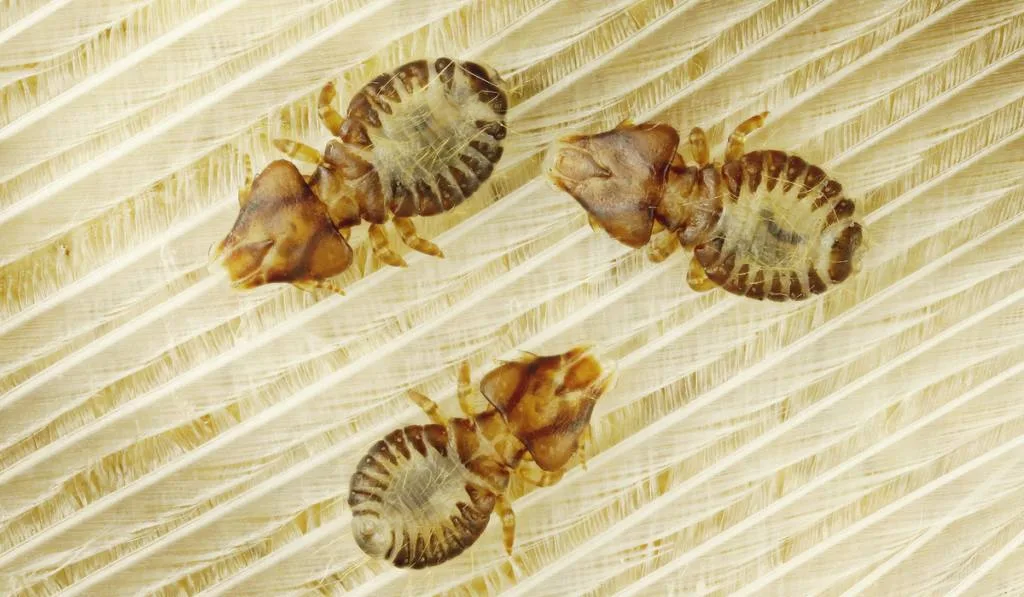
“Lice” is the plural form of “louse.” Lice are tiny parasitic insects that attack peacocks and other animals, just like fleas do. You can identify lice on your peacock by their long abdomens filled with the blood of your peacocks.
Lice that have not collected blood usually do not have long abdomens. Their legs are attached to the thorax, which you may confuse as their head because it is very close to the anterior end (front) of the insect.
If you see a louse on just one peacock, you need to treat every peacock around and make sure that you prevent lice from reaching the birds. You can prevent lice from reaching your peacocks by sprinkling Sevin dust on the ground where the peacocks lie and dust themselves.
2. Mites
The three most common external parasites that farmers and pet owners know are fleas, lice, and mites.
Unlike fleas and lice, mites are arachnids and not insects. You can identify mites by their legs. The legs of fleas and lice are concentrated on the upper part of the body, but those of mites are scattered around the body. Just like other parasites, mites suck the blood of your peacocks and collect nutrients from the blood.
If you find mites on your peacocks, you need to treat them with approved pesticides for poultry every 10 days for four or five weeks at least. Continue to treat your peacocks monthly until you are sure that there are no mites in the yard anymore.
3. Chiggers
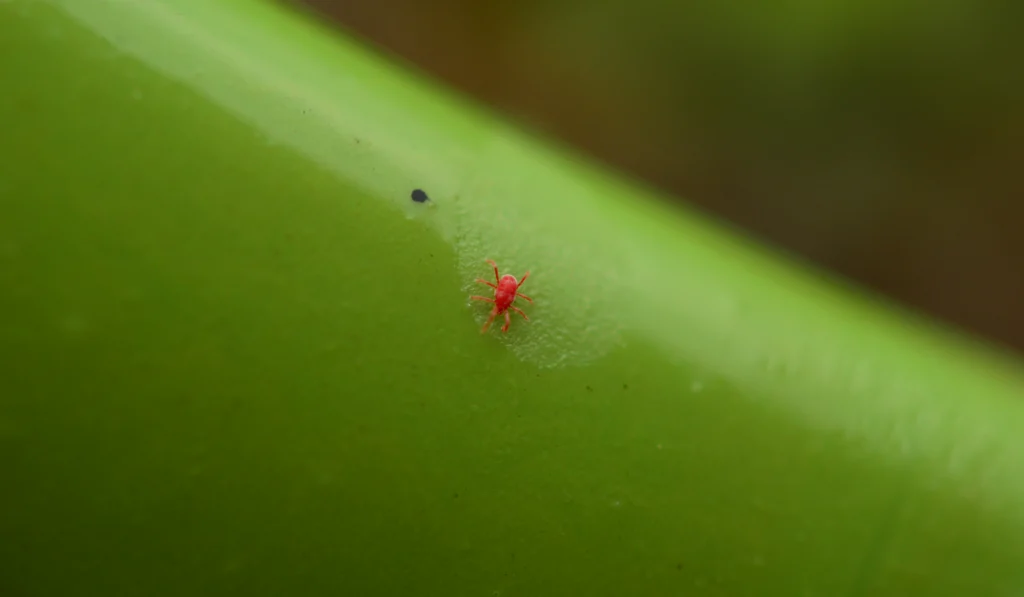
A chigger is a type of mite that you can find on the wings, thighs, and breasts of your peacocks.
Chiggers can be difficult to treat, but you can treat them by first disinfecting the yard and coop. When there are no chiggers in the environment, you can treat your peacocks using an approved pesticide (at low strength).
4. Intestinal Nematodes
Nematodes are harmful worms that can infect peacocks and other animals.
Most animals get infected from eating foods contaminated with nematode eggs. It is common for free-range peacocks to get nematodes in their intestines. Nematodes can cause a wide range of diseases in your peacocks.
It is best that you contact the vet if your peacocks have a high nematode load.
To know if your peacocks have intestinal worms, monitor their growth rate and feeding habit. If they are not growing as fast as they should but are eating a lot, they could have nematodes.
You should first check for external parasites. If you cannot find external parasites on your peacocks, they most likely have internal parasites such as nematodes.
Remember to deworm your peacocks regularly.
5. Harmful Microbes
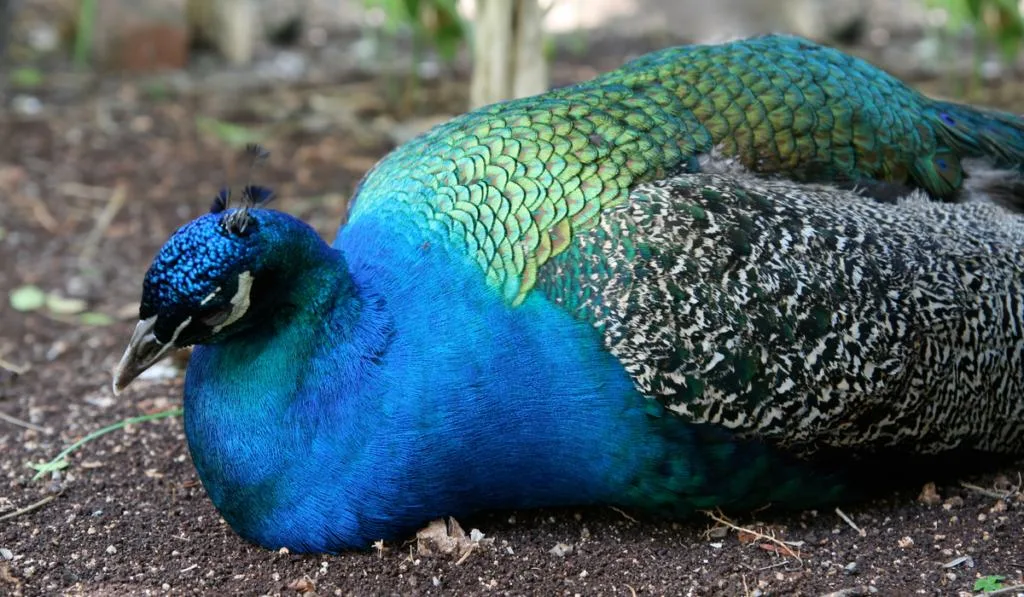
Microbes such as bacteria, certain fungi, and viruses can infect peacocks. There is a wide range of microbes, and they can cause a wide range of diseases. These diseases are easily preventable when you treat your birds quickly and make sure that they eat the right meals.
If you notice that your peacocks are sick, contact your vet so that they can find what is wrong with the birds and also give good veterinary advice. It will also help if you isolate sick birds so that they do not transmit the disease to the healthy ones.
Also, you should make sure that your peacock pen or coop is well-ventilated, as bacteria and other microbes love high humidity.
Make sure that you prevent harmful parasites and pests from reaching your peacocks.
Final Thoughts
Peacocks can accidentally get fleas when there are flea-infested animals around them. You can treat your peacocks with poultry-safe pesticides, but it is best to prevent fleas from reaching your peacocks in the first place. Follow the prevention tips in this article to prevent fleas and other pests from infecting your peacocks.
